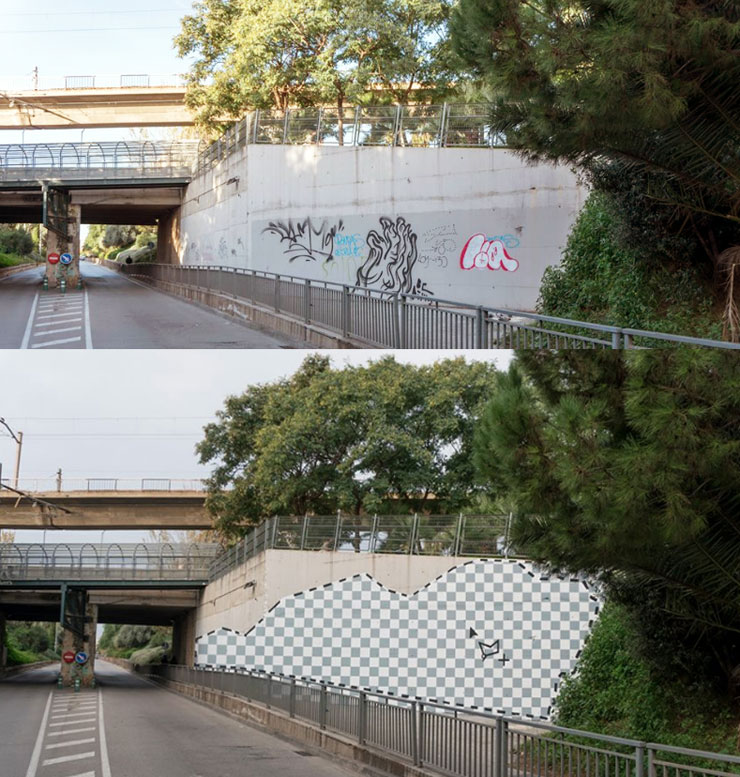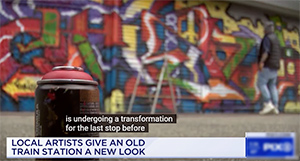Talented urban planning that has sufficient vision for the future will anticipate the needs and behaviors of a city, looking forward to its growth and reconfigurations over time. In L’Hospitalet, Spain the Street Artist Ampparito gathered plenty of evidence that sometimes old solutions in the built environment have to be destroyed in order for the new needs of an evolving city.
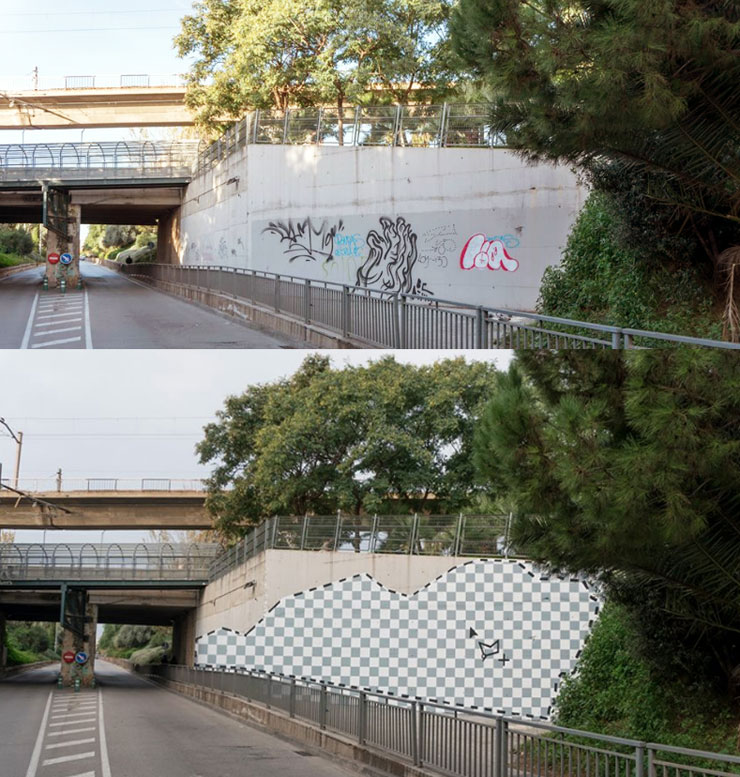
Before and after. A virtual surgical solution for urban impediments from Ampparito (©Ampparito)
The resulting new mural is a humorous merging of digital and mortar, a conceptual piece that imagines the erasing of walls of an urban design/engineering mess in the way a Photoshop designer may do it – without heavy equipment, traffic disruption and no environmentally toxic by-products.
Esteban Marin tells us of the 10 day residency that the Spanish urban interventionist took part in with Contorno Urbano to study the mural site, work with neighbors and students from the area to discuss the needs of the people, and the bold outcome that Marin ironically calls “ground-breaking.”
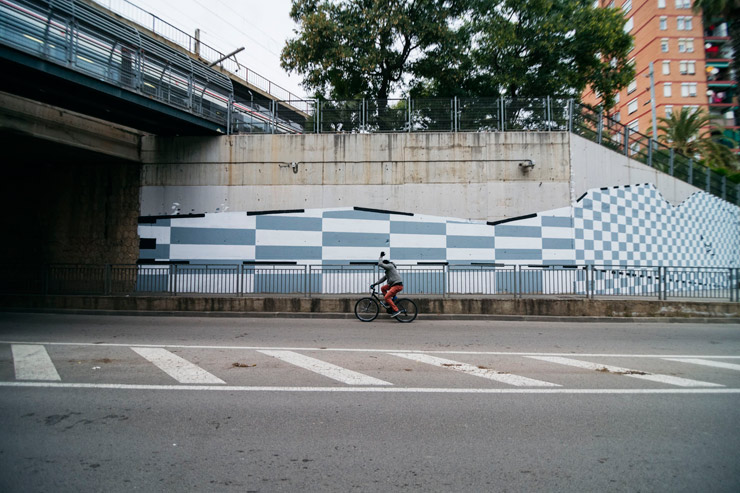
Ampparito. Contorno Urbano Foundation. 12 + 1 Project. l’Hospitalet de Llobregat, Barcelona. November 2018. (photo © Clara Antón)
The meeting place of a rail line and a road that once served the communities that grew up around it, everyone agrees that it now divides it and impedes a freeflow of traffic and people. It is something that a practitioner of Chinese medicine or its various healing modalities (acupuncture, Qigong, Tai Chi) may describe as an interruption of energetic pathways, a blockage of Qi energy. In the parlance of urban designers and civil engineers it would be similar; rebalancing urban mobility.
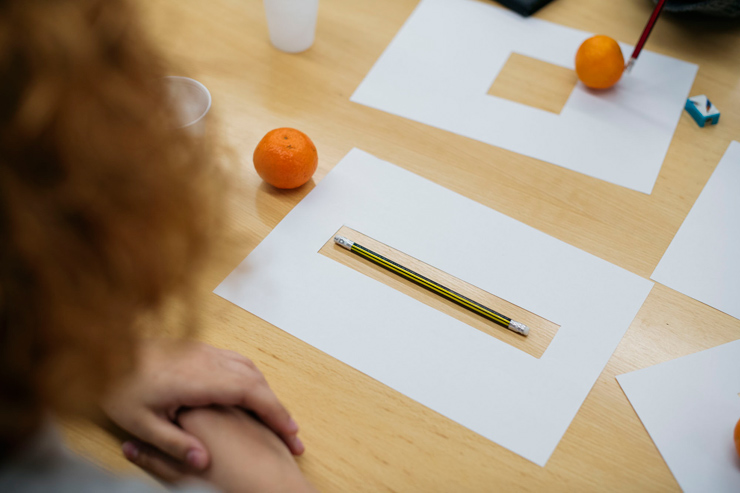
Ampparito and a group of students study obstacles and erasure. Contorno Urbano Foundation. 12 + 1 Project. l’Hospitalet de Llobregat, Barcelona. November 2018. (photo © Clara Antón)
“The wall must be destroyed and rail tracks moved underground to facilitate the flow between districts,” says Marin. “Right now the road where the wall is cuts the city in two, same as the rail track. This is a crossroad point on the city with a lot of obstacles for the people living nearby to move around freely.”
“The spot where I had to work was a concrete wall that works as a base for the railway,” explains Ampparito. “Sometime ago this track was perpendicularly crossed by other trains. At some point this old transport disappeared and a road was built in order to connect the two main parts of Hospitalet. It is poetic how this tracks and roads split the village in several parts, making hard to connect two adjoining places.”
Although he may have liked to create an image that provided an emotional healing or comfort, the artist says that a decorative or aesthetically pleasing design wouldn’t have answered the calls from the community.
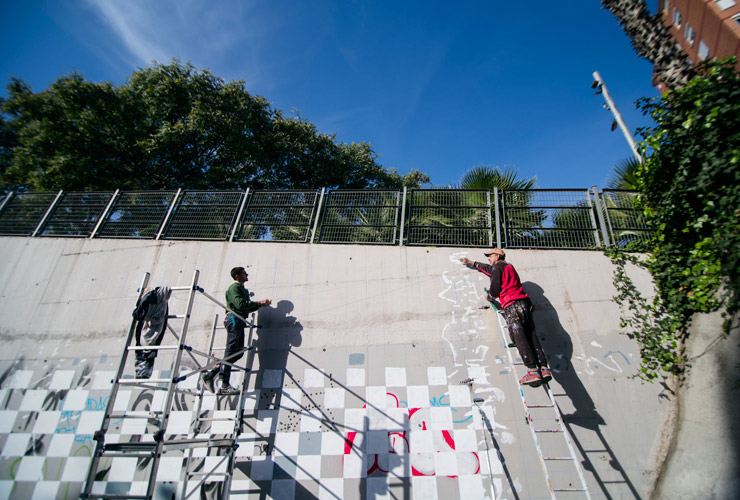
Ampparito. Contorno Urbano Foundation. 12 + 1 Project. l’Hospitalet de Llobregat, Barcelona. November 2018. (photo © Clara Antón)
“I didn’t want to sweeten this place,” he says, remarking that most people simply drive past it. “It’s so hard to appreciate anything in this non place,” he says. “No one stops here. “Cars go through quite fast and there is no way to hang out here.”
Why not simply select your Photoshop tool from the toolbox and erase the obstruction? That’s what students helped Amparitto decide during his workshops with them to study the issue and devise solutions. An ingenious solution that speaks to the difference between digital work and actual labor, it also may not translate as clearly to older generations or those not familiar with design software, but it packs a visual punch that makes you crack a smile regardless.
“While you stand there in between cars going fast so close,” says Ampparito, “it all will make a bit of sense.”
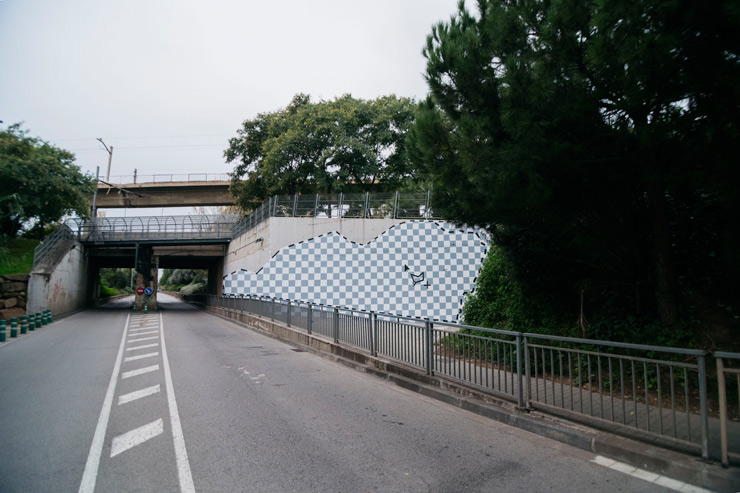
Ampparito. Contorno Urbano Foundation. 12 + 1 Project. l’Hospitalet de Llobregat, Barcelona. November 2018. (photo © Clara Antón)
Other Articles You May Like from BSA:
Trust artist Dread Scott to perfect the provocative phrase that can raise the prickly ire of certain street passersby, simply and succinctly. And trust the self-elected censorious social media platfo...
Stohead (Christoph Häßler) started writing graffiti at 14 in southern Germany, where he was born, and last month he completed his largest mural in Berlin for UN, three decades after he began. St...
Brooklyn is in full effect this weekend with Bushwick Open Studios, Coney Art Walls, and the prep for Welling Court and Northside Art Festival beginning already for next. Go out and stroll, get ...
Opiemme continues on the search for suitable locations for his Vortexes - a circular shape that contains text and words and poetic dispatches. He likens them to a swirl, a whirlpool, a spiralling symb...
Welcome to BSA Images of the Week. We're midway through the month and every one is puzzled by this surge of new corona cases - although the New York mayor says the numbers are plateauing. The pre...
 BROOKLYN STREET ART LOVES YOU MORE EVERY DAY
BROOKLYN STREET ART LOVES YOU MORE EVERY DAY